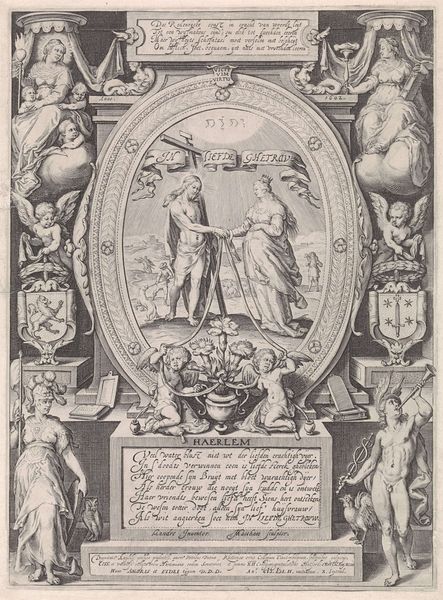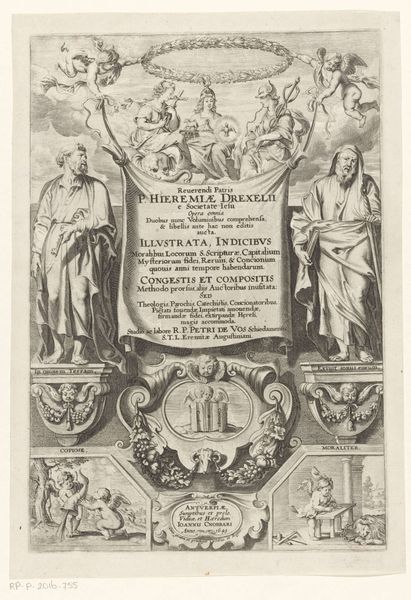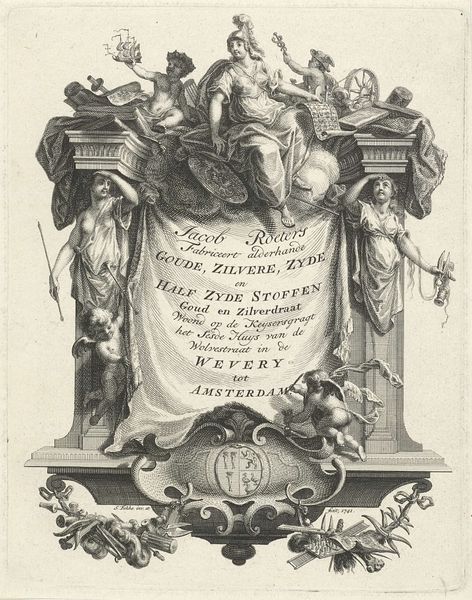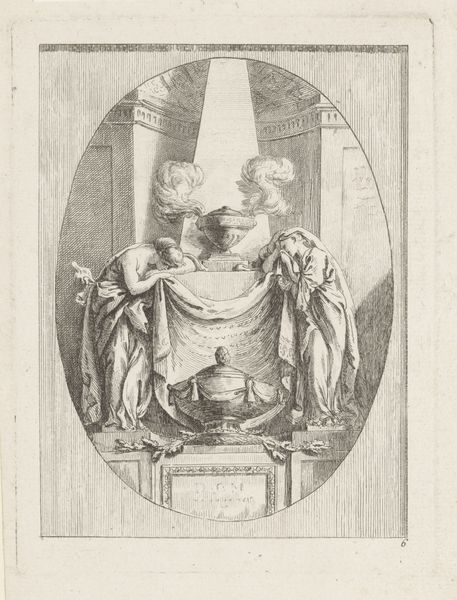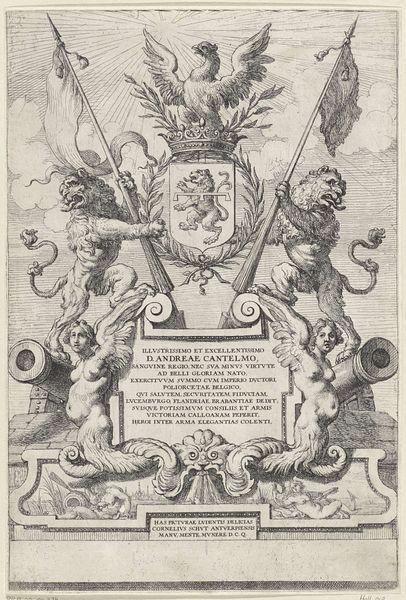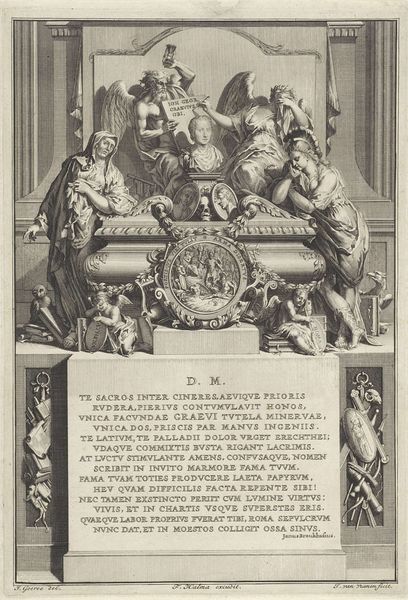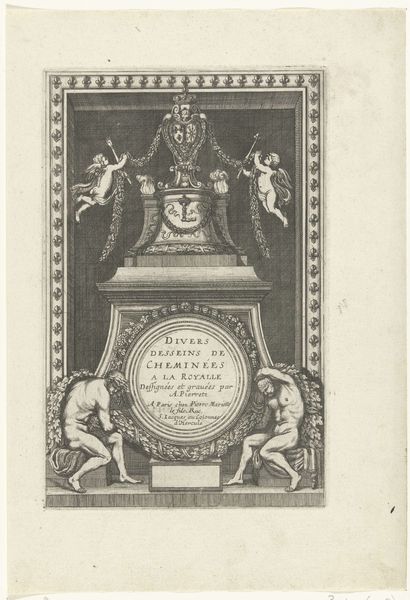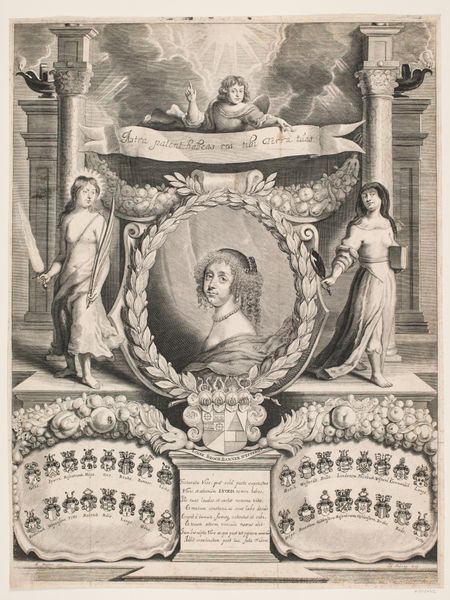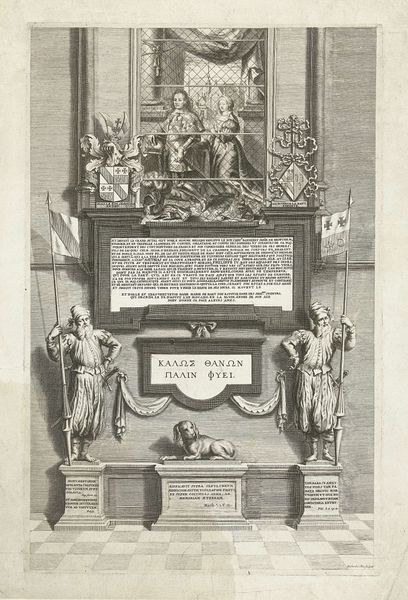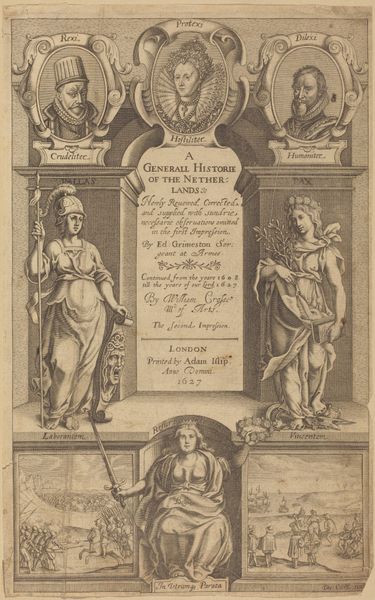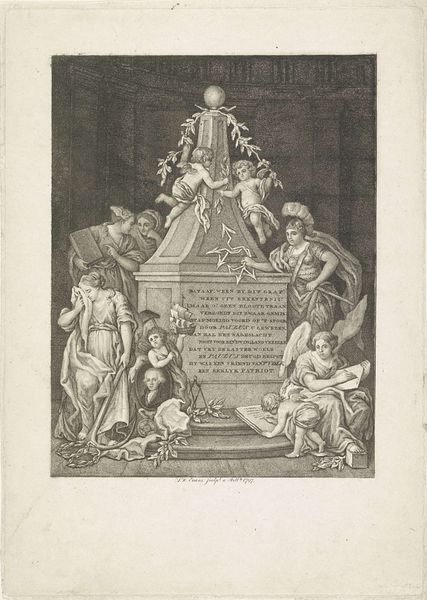
print, engraving
#
allegory
#
baroque
# print
#
old engraving style
#
figuration
#
line
#
history-painting
#
engraving
Dimensions: height 238 mm, width 148 mm
Copyright: Rijks Museum: Open Domain
This print, made in Amsterdam by Hendrick Hondius I in 1618, overflows with symbols that speak volumes about its time. At the top, Fama, or Fame, trumpets from above a bull’s head, a classical symbol for labor and strength, crowning the central inscription. Two allegorical figures flank the text, representing Pictura (Painting) and Optica (Optics), standing atop pedestals decorated with the tools of their respective trades, symbolizing the fruits of labor. Consider the bull: from the Cretan Minotaur to the Golden Calf, the bull has represented primal power, fertility, and, in some contexts, the dangers of unchecked desire. Here, it signifies the solid foundation upon which artistic honor is built. This interplay of classical and contemporary motifs showcases how artists in the 17th century saw themselves as heirs to a rich tradition, continuously reinterpreting and adapting ancient symbols to reflect their own era's values. Such symbols are not static; they evolve, accumulate layers of meaning, and continue to affect us on a subconscious level, revealing that we are all connected to those who came before us.
Comments
No comments
Be the first to comment and join the conversation on the ultimate creative platform.
